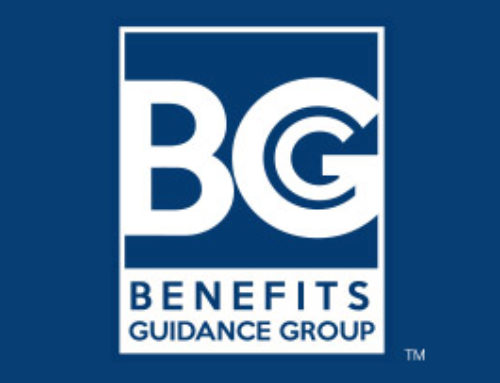Keeping health care costs down has long been a pressing issue for employers. In 2017, the uncertainty that comes with the new Trump administration, which seems certain to make numerous changes to health care policy, is making some business leaders nervous.
But even if there are dramatic changes in regulations and taxes, the basic foundations of employer-based health benefits are not likely to be challenged. And rising costs will still be a problem — which is why it’s important employers continue to keep an eye out for new innovations while continuing to adopt strategies that have proven effective in containing the rise of health costs.
HDHPs likely to get a boost from Trump
The movement toward high-deductible health plans (HDHPs) such as HSAs and HRAs continues to be very strong, according to industry experts. “The top trend going into next year has been consumer directed health care plans or high-deductible health plans,” says Kevin Davis, senior employee benefits consultant at Univest, a financial and insurance services company. “We see a lower premium rate increase [with HDHPs]; about half of what we see on traditional PPO-type plans. It does seem to be working as a cost-containment strategy.”
Even though the trend toward HDHPs is not a new development, it’s worth noting that a big push is expected from the Trump administration to promote HSAs and similar models. Trump often spoke of HSAs as a key part of his vision for health care coverage during his campaign.
Rodney Alvarez, vice president of talent management with Celtra and a spokesperson for the Society of Human Resource Management (SHRM), agrees the adoption of HDHPs has been widespread among all sizes of employers. Even though this model shifts more costs to consumers, Alverez says the flexibility of HDHPs can allow employers to help cover some of those costs, while still paying less in premiums.
“We realized we could save a lot of money if we bought a high-deductible plan and simply paid everyone’s deductible,” he says. “It would still be cheaper, and it allows us to provide the same benefits you would have in a Cadillac plan — but without playing the super-high premiums of those plans.”
Self-insured model spreading to smaller employers
Self-insured plans, like HDHPs, are not exactly a new idea. For years, many large employers have found excellent flexibility with the self-insurance route while avoiding some of the taxes and regulations that come with fully-insured plans. On the other hand, smaller businesses have been less able to take on the risk of self-insurance.
But some innovations in recent years have made it much easier for smaller businesses to self-insure. One of the prime examples is “level funding” for self-insured plans. This approach allows employers to pay a regular and predictable (i.e., “level”) fee for insurance, regardless of claims. The model uses stop-loss insurance to address unexpected costs, and adjusts the fee yearly—and if claims are lower than expected, employers can get a refund.
Davis says he’s seeing increased interest in the level funding approach. “It’s a newer strategy in the last two years; it’s been a way for businesses — in some markets as small as 10 employees — to take advantage of true transparency and see their claim exposure,” he says.
Davis adds that companies with a high rate of claims would probably not be a good fit for level funding. “There is risk,” he notes. “But with every client I’ve seen make the change, it has actually reduced both their upfront cost, and their renewal has been lower. For my clients, it has been a win-win.”
Pharmacy costs — a continuing problem
One area of cost increases that are especially problematic for employers as well as consumers is the continuing high cost of drugs. Headlines about huge increases in the cost of therapies such as the EpiPen have reflected a general trend of sharp increases in drug costs. The high cost of specialty pharmaceuticals and compound drugs are often very challenging for employers.
Businesses and pharmacy benefits managers (PBMs) have pushed back by enacting strategies such as reference-based drug pricing. Reference pricing places limits on what the plan will pay for a therapy, in effect driving providers and patients to less-expensive therapies. In many cases, there is a wide range of costs for the therapy, so finding a less expensive alternative is not as difficult as might be thought.
Davis agrees that strategies such as reference pricing should be considered by employers seeking to hold down costs. “It’s an excellent strategy for larger, self-insured employers,” he says. “You’ll end up getting the most cost-effective drug at the lowest price.”
Online visits offer cost-containment help
Alvarez and Davis agree that telemedicine is showing great promise as another cost-containment strategy. Online medical appointments via Skype or other platforms not only offer convenience to employees, they are much less expensive than visits to a clinic. And many workers seem to like using the online visit approach, Alvarez notes.
“Our younger population, our millennials, don’t mind doing that — they find it innovative and cool,” he says. “The Skype visits reduce our costs considerably.”
Davis also predicts online medical visits will be a significant cost saver for employers. “There’s a lot of interest in telemedicine,” he says. “For a self-funded or an HDHP model, it is the most cost-effective way to get treatment for certain conditions that can be handled by [visits on] FaceTime or Skype; conditions such as allergies, ear infection, or strep throat.”
Narrowing networks cut down on costs
Finally, another strategy that health care purchasers are looking at is narrow provider networks. By limiting health plan enrollees to a narrow network of providers, health purchasers can negotiate lower costs by ensuring their enrollees go to one system’s providers.
“In our market, that strategy generally saves an employer about 15 percent over a fuller network,” Davis says. “Every year, we see additional options of narrow networks. It hasn’t had the same traction of some cost-containment strategies, but that 15 percent savings definitely grabs an employer’s attention, and they do their due diligence on looking into whether that’s a viable strategy.”
Davis’ point about traction reflects the fact that some cost-containment strategies can be controversial. HDHP plans shift more cost on to enrollees, raising concerns that it might discourage consumers from utilizing health care services even when needed. Reference-based drug pricing sometimes meets with pushback from providers who are not happy being told what drugs they can prescribe.
And similarly, narrow networks limit consumers’ access to providers — patients may have to switch doctors or not see a specialist they prefer. But studies generally show that health care quality is similar between narrow and broader networks.
There are arguments on all sides of these issues, and many of these debates will take time to resolve. But for now, employers need to think about their specific workforce and how benefits can best be structured to balance the needs of workers with the need to hold down rising health care costs.





